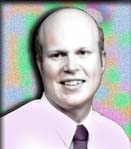 Physicians' Perspective: Healthcare Meltdown nad the Crazy Myths that Keep the Heat On
by Rick Bayer
Physicians' Perspective: Healthcare Meltdown nad the Crazy Myths that Keep the Heat On
by Rick Bayer
There are 43 million uninsured Americans, with another 50 million underinsured—and the numbers grow. The population is aging and Medicaid, including our Oregon Health Plan, is being slashed. Meanwhile, the Bush Administration spends billions to fight wars while cutting billions from health benefits for veterans.
Bob LeBow, MD, MPH, a Harvard and Johns Hopkins trained family physician and past-president of Physicians for a National Health Program (www.pnhp.org) wrote an excellent book called Health Care Meltdown: Confronting the Myths and Fixing our Failing System (JRI 2002 www.healthcaremeltdown.org). In it, he describes myths marketed by special interests seeking to maintain profits.
Myth 1: We don’t have problems with access since anyone can get care by going to hospital Emergency Rooms. But this is expensive and inefficient. Many uninsured, with no primary care doctor, delay care until there’s a crisis resulting in expensive emergency department and hospitalization costs.
Myth 2: America has the best health care in the world. This is untrue for Americans who can’t afford it. Using objective criteria, the only category the US ranks number one in is the amount we spend. In life expectancy, infant mortality, and immunization rates, we rank 20 to 25th. In “Fairness”, we rank 54th. It is barbaric that half of all bankruptcies in the US are due to medical bills.
Myth 3: “The market is the solution”. The market is great for many things, but not for healthcare. The market solution has given us increased numbers of uninsured, decreased choice of doctors & hospitals, and huge administrative costs. Insurers cherry-pick healthy customers, refuse coverage to those with pre-existing medical conditions, and lavish corporate officers with huge bonuses. The market decreases quality of care because the corporate goal is to maximize profit rather than provide care.
Myth 4: “Private is always better than public”. This dogma persists among some politicians in spite of millions in fines levied on Blue Cross of Illinois, HCA/Columbia and others for fraud, and in spite of private overhead costs averaging 15% to 25% compared to Medicare overhead costs of 3%. Money spent on administration, inflated CEO salaries, and marketing is money that doesn’t pay for health care. Also, I get to vote for legislators but I don’t get to vote for the board of directors of the local HMO.
Myth 5: We can’t afford universal coverage. This was used successfully to derail a recent ballot measure in Oregon (www.healthcareforalloregon.org). Yet every other industrialized country does this and spends considerably less, so why can’t we? Study after study has shown that a national health insurance model where there is a single risk pool for the entire population cuts overhead dramatically. It’s smart. The only way to save our health care system is to put all our citizens in a risk pool like Medicare.
Myth 6: Americans won’t tolerate “rationing” of healthcare. The Oregon Health Plan disproved this. Besides, it’s already rationed. The usual US style of rationing is “if you can afford the health care, you get it; and if you can’t, then you don’t”. There are more humane ways to ration care. Some equate a national insurance system like the one in Canada with “socialized” medicine and label it as evil. Canada does have a single payer system but it is not socialized medicine because the delivery system is overwhelmingly private, like our Medicare. The Canadian health system delivers healthcare to all citizens for much less than the US spends and Canada has health care rankings that are superior.
Myth 7: Research and development (R&D) drive the higher drug costs in the US. But drug companies have the highest profit margin of all American corporations. They spend three times more on marketing and administration than R&D. US companies get taxpayer subsidies from government-sponsored research too. Pharmaceutical costs are soaring and are surpassing physician costs as the second largest percentage of healthcare costs. Only hospital costs are higher.
Myth 8: We can get to universal coverage through incremental changes. Some well-meaning persons seek to expand Medicaid, add prescription drug benefits to Medicare, or promote a patient bill of rights for the insured. But without a single insurance pool we’ll never get to universal coverage. Princeton economist Uwe Reinhardt describes the “self-destruct mechanism in the very idea of incrementalism”. I agree. In the US, seniors love Medicare but we need a “Medicare for all Americans”. One risk pool with everybody in and nobody out is smart and humane medicine.
Rick Bayer, MD is board-certified in internal medicine, a fellow in the American College of Physicians (FACP) and practiced in Lake Oswego for many years. Co-author of Is Marijuana the Right Medicine For You? A Factual Guide to Medical Uses of Marijuana, he was a chief petitioner for the Oregon Medical Marijuana Act in 1998, and manages www.omma1998.org. He supported the recent single payer healthcare ballot initiative in Oregon.

